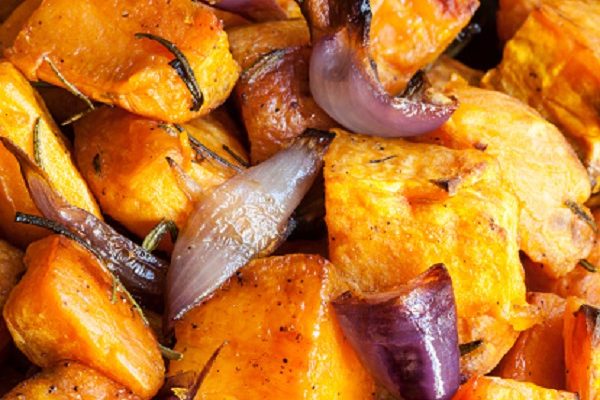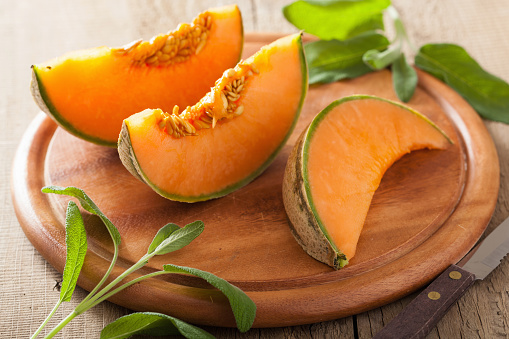A Love Letter to Asparagus: Why We Can’t Get Enough of This Veggie
We like veggies of all kinds, but a few truly inspire our passion for eating well. Asparagus is so delicious, versatile, and healthful that we fall in love with it all over again each year when it comes back in season with the return of warm weather.
We could go on and on about asparagus’ virtues, but here are just a few reasons why we adore it and you might, too:
Tastes like spring.
The firm green spears emerge from the ground as the days become longer and as they grow, they seem to absorb the flavors of sunshine, gentle rains and the earth. That makes them lightly sweet and juicy, with just a faint hint of earthiness. If you want to know what spring tastes like, a fresh asparagus spear might be the best way to find out.
Unlimited enjoyment.
A cup of asparagus has just 27 calories, which come with 2.8 grams of fiber, about three grams of protein, and virtually no fats. Asparagus is a non-starchy vegetable, so you can eat as much as you want without slowing progress toward your weight loss goal.
Fluid flushing.
Asparagine, an amino acid, is a key component of the protein in asparagus. It acts as a natural diuretic, which helps your body release excess fluids that can cause bloating. This process also helps regularly flush out sodium, a leading cause of hypertension, or high blood pressure.
Potassium power.
You get 271 milligrams of potassium in a cup of asparagus, making it a good source of this essential mineral. Your body needs potassium to keep your sodium level in balance, as well as to regulate the sugar in your blood.
Good for the gut.
Your body relies on a healthy population of microbes in your digestive tract to help it absorb nutrients from food and ward off damaging bacteria in your body. Iunlin, a carbohydrate unique to asparagus, promotes the growth and activity of beneficial microbes in your intestines. That’s why asparagus is a natural probiotic food.
Folate full.
A B-complex vitamin, folate plays a key role in making new cells and helps prevent mutations that can lead to cancer and other health problems. Asparagus is a rich source of folate, giving you more than just about any other food except the super-nutritious leafy greens like kale and collards.
Cancer blocker.
The National Cancer Institute has identified glutathione, a potent antioxidant, as an important anti-carcinogenic nutrient. Eating asparagus is the best way to increase your body’s supply of glutathione.
Breakfast veggies.
The nutritional profile of asparagus makes it appealing, but its flavor and versatility earn our affection every day, starting first thing in the morning. Lightly steamed asparagus is the ideal accompaniment to poached or sunny-side up eggs. When the yolks run out, they become like an instant, lower-fat Hollandaise sauce for the spears. You can also include asparagus pieces in your favorite frittata, in which the bright vegetable flavor contrasts with mild taste of whipped eggs.
Roasted and ready.
If you’ve only eaten asparagus steamed, you’ll be surprised at how different it tastes when roasted in the oven. The stems become tender and sweeter, while the tips turn brown and crispy. Just spritz them with a bit of zero-calorie cooking spray and season with salt and pepper, then put them in a 425 degree F oven for about 15 minutes. To see how easy it is, check out this video with Nutrisystem dietitian Mandi Knowles.
Hot off the grill.
Like roasting, open-flame cooking enhances the flavor of asparagus and brings the spears to the same perfect balance of tender and crispy. Start with the thickest, firmest stalks and prepare them in the same way as for roasting—with just a little bit of oil and light seasonings. Cook them over a medium flame for about 10 minutes, alone or with other vegetables such as sweet peppers, onions and summer squash.
Tender but firm.
The process of blanching—quickly soaking in boiling water followed by an ice-water bath—tenderizes firm asparagus spears but prevents them from becoming mushy and limp. Blanched asparagus is perfect for dipping in humus or plain yogurt seasoned with fresh herbs and spices.
The raw way.
Asparagus is too hard and pulpy for most people to eat raw, but if you like your veggies uncooked, use a vegetable peeler to shave off long strips from the spears and then toss them with a vinaigrette or add them to grain salads.
The post A Love Letter to Asparagus: Why We Can’t Get Enough of This Veggie appeared first on The Leaf.
from The Leaf https://ift.tt/2L3BPNS







Post a Comment